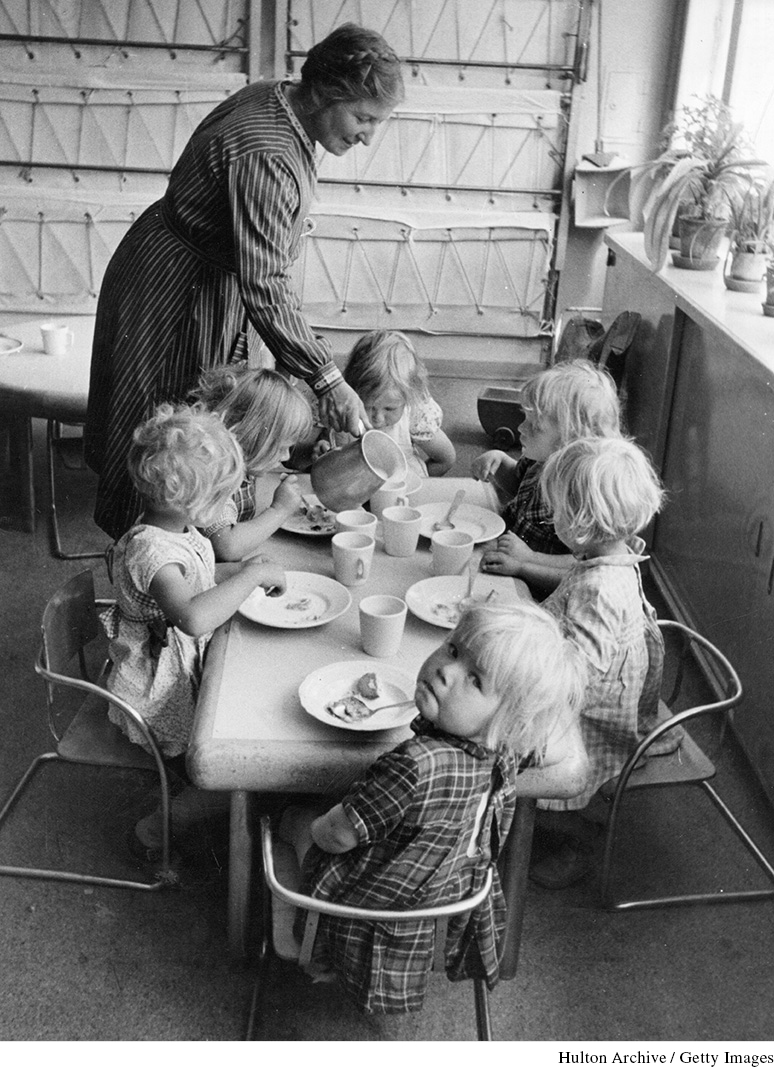The Welfare State: Common Ground East and West
The Welfare State: Common Ground East and West
On both sides of the cold war divide, governments channeled new resources into state-financed programs such as pensions, disability insurance, and national health care. These social programs taken as a whole became known as the welfare state, indicating that states were no longer interested solely in maintaining order and augmenting their power. Veterans’ pensions and programs were primary, but the welfare state extended beyond those who had sacrificed in wartime. Because the European population had declined during the war, almost all countries now desperately wanted to boost the birthrate and thus gave couples direct financial aid for having children. Imitating the social security programs initiated under Bismarck in Germany in the 1870s and the more sweeping Swedish programs of the 1930s, nations expanded or created family allowances, health care and medical benefits, and programs for pregnant women and new mothers.

Some welfare-state policies had a strong gender bias against women. Britain’s maternity benefits and child allowances favored women who did not work outside the home by providing little coverage for workingwomen. The West German government passed strict legislation that forced employers to give women maternity leave, thus discouraging them from hiring women. It also cut back or eliminated pensions and benefits to married women. In fact, West Germans bragged about removing women from the workforce, claiming that doing so distinguished democratic practices from Communist ones. The refusal to build day-care centers or to allow stores to remain open in the evening so that workingwomen could buy food for their families led West Germany to have among the lowest rates of female employment of any industrial country. Another result of West Germany’s discriminatory policies was a high rate of female poverty in old age.
By contrast, in eastern Europe and the Soviet Union, where wartime loss of life had been enormous, women worked nearly full-time and usually outnumbered men in the workforce. As in many western European countries, however, child-care programs, family allowances, and maternity benefits were designed to encourage pregnancies by workingwomen. The scarcity of consumer goods and the lack of household conveniences discouraged workingwomen in Communist countries from having large families no matter what the government wanted. Because women bore the sole burden of domestic duties under such conditions on top of their paying jobs, birthrates in the eastern bloc stagnated.
Across Europe, welfare-state programs aimed to improve people’s well-being. State-funded health care systems covered medical needs in most industrial nations except the United States. The combination of better material conditions and state provision of health care dramatically extended life expectancy and lowered rates of infant mortality. Contributing to the overall progress, vaccines greatly reduced the death toll from such diseases as tuberculosis, diphtheria, measles, and polio. In England, schoolchildren stood an inch taller, on average, than children the same age had a decade earlier.
State initiatives in other areas played a role in raising the standard of living. A growing network of government-built atomic power plants brought more thorough electrification of eastern Europe and the Soviet Union. Governments legislated more leisure time for workers; for example, Italian workers received twenty-eight paid holidays annually. To rebuild, postwar governments sponsored new suburbs around the edges of major urban areas in both eastern and western Europe. Many buildings went up slapdash, but they dramatically improved living conditions for postwar refugees, workers, and immigrants.